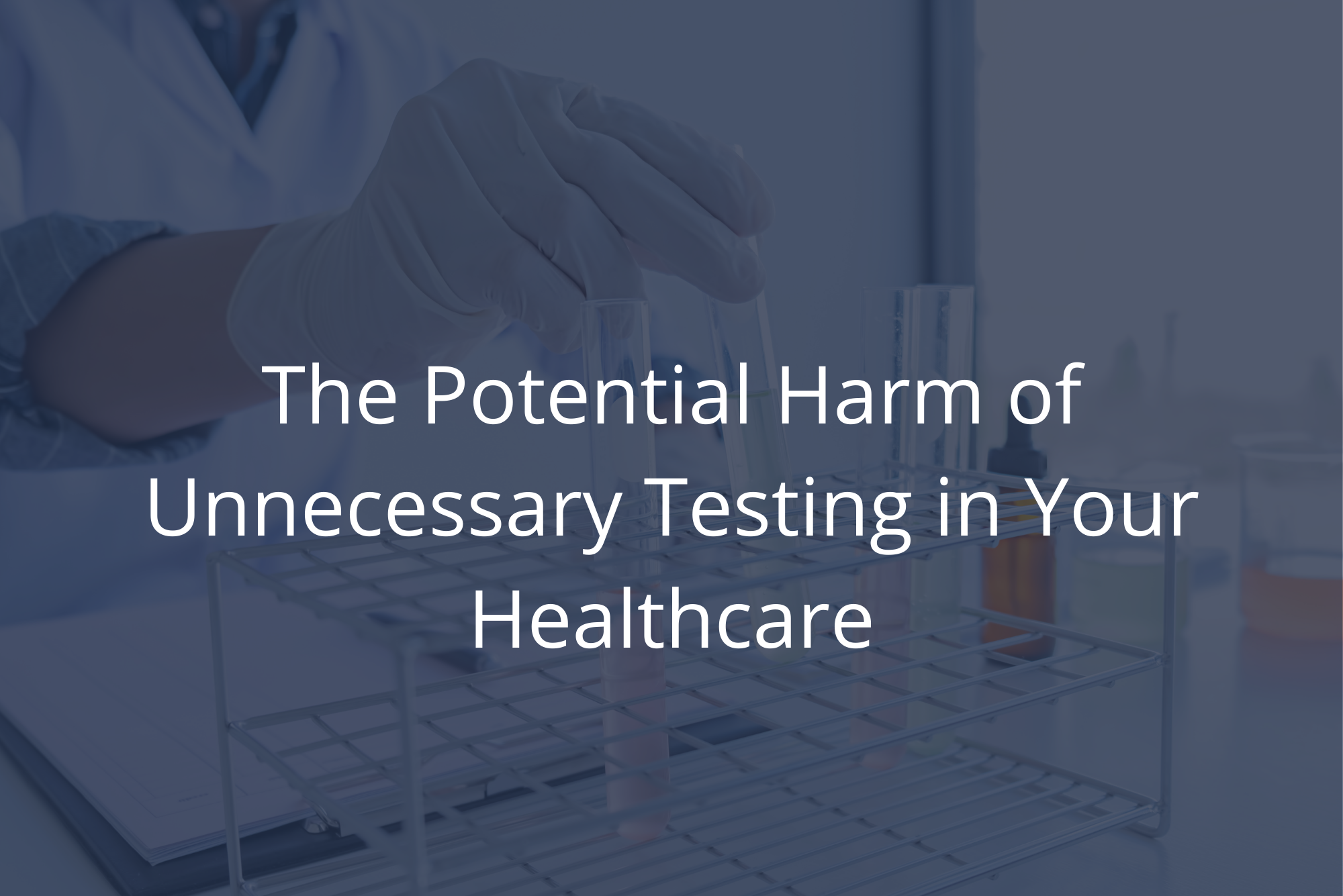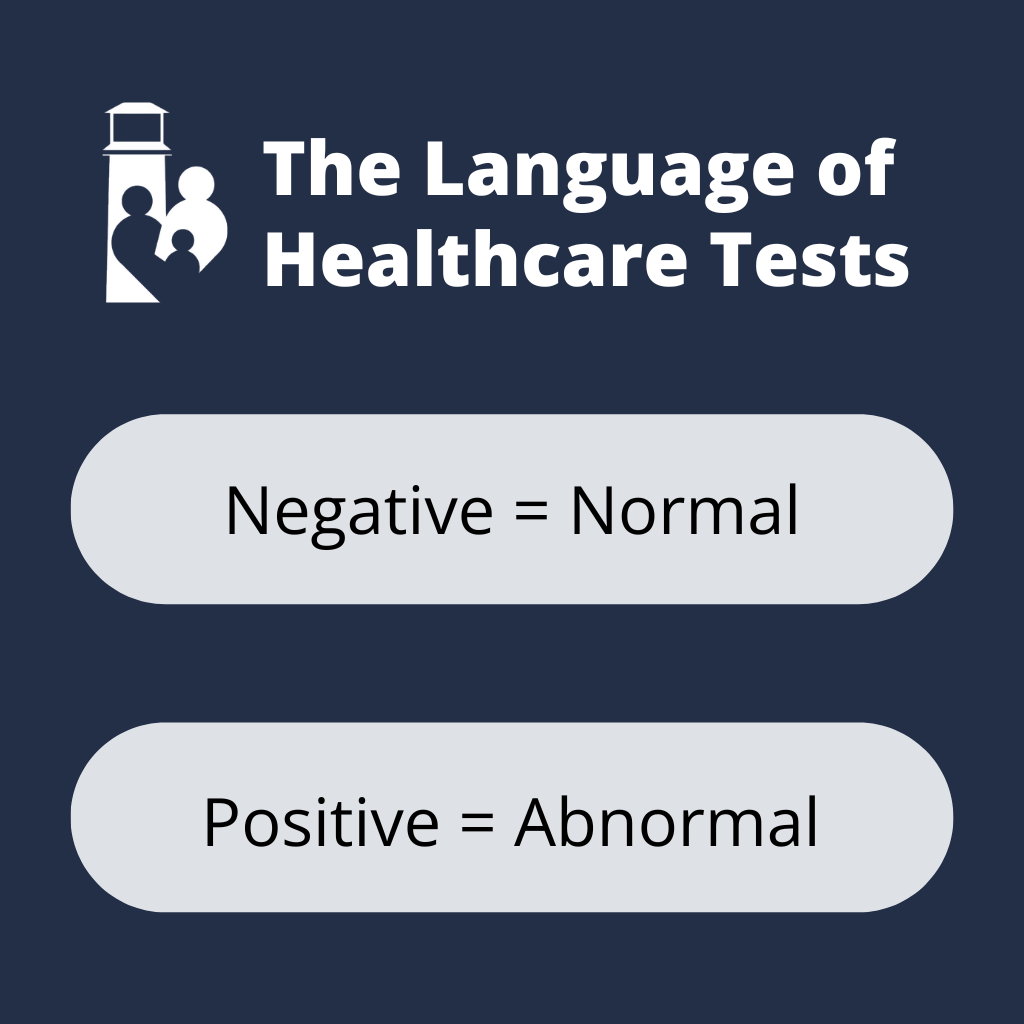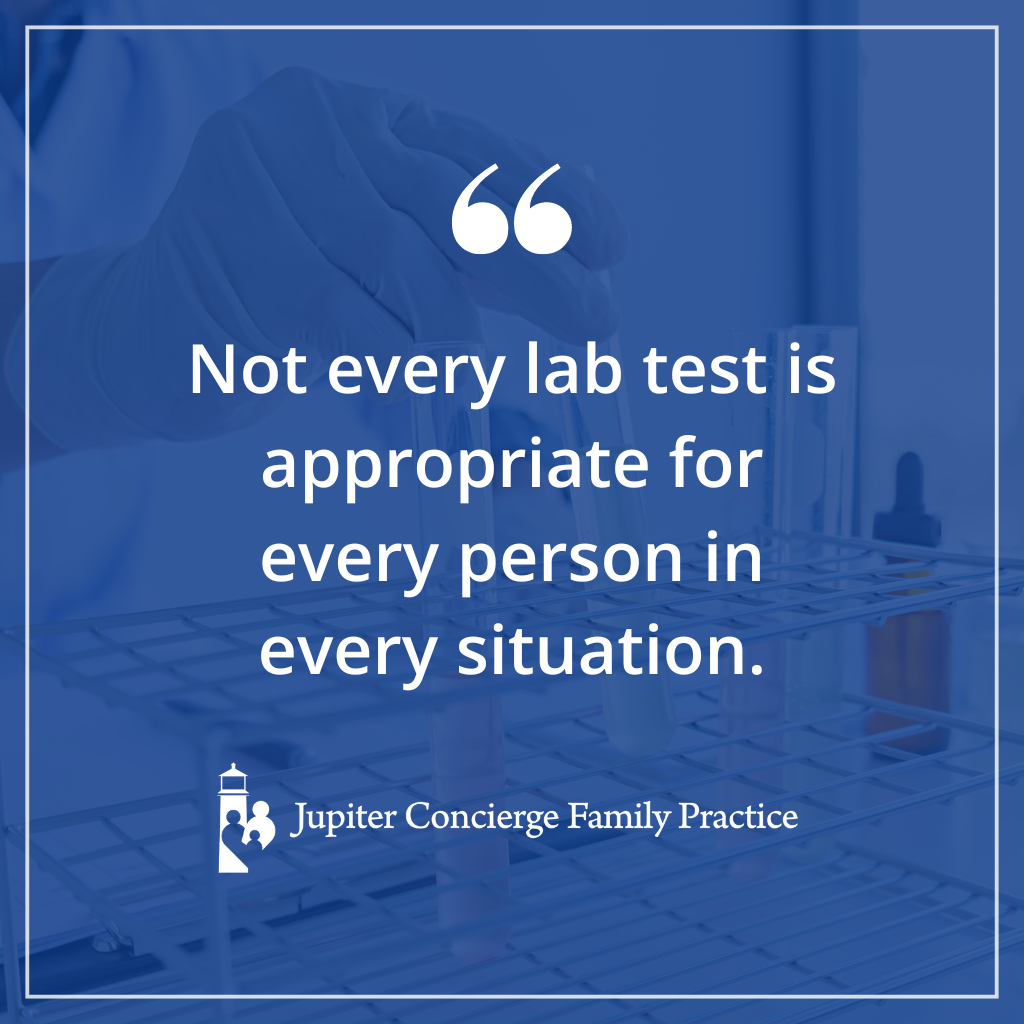
If you’ve read my blog before, you’ve probably noticed that I’m a big proponent of prevention in healthcare.
Taking a preventative approach allows you to confront dysfunction before it produces disease and to catch disease in an earlier, more treatable stage.
But can you be too proactive in caring for your health?
I won’t say “yes” exactly, but there is something to this idea. Lab tests, for instance, are useful tools that offer incredible insights into how the human body is faring. But too many lab tests, or tests that aren’t appropriate for your age, health status, etc., aren’t just unhelpful — they can be downright dangerous.
And that’s not theory. I’ve seen it in action.
So, to protect and promote your health, let’s roll up our sleeves and investigate the dangers and realities of unnecessary tests in healthcare.
Test Results in Healthcare: Normals, Negatives, and What It All Means
The terminology used for healthcare test results sometimes gets confusing, so let’s start with some definitions.
Healthcare test results produce either a normal or abnormal result. A “normal” test result is also called a “negative” result, and an “abnormal” result is called a “positive” result.
Because we typically use the words “positive” and “negative” to mean “good” and “bad,” this terminology may seem counterintuitive.
It helps to think of test results in terms of what you’re being tested for. If your physician orders a thyroid panel because they suspect abnormality, for example, results in the normal range mean you tested negative for thyroid dysfunction.
That may be a positive result for your life, but the test results themselves are negative.
If the thyroid panel results are abnormal, then you’ve tested positive for thyroid dysfunction. You may consider that a negative result for your life (or maybe you’re happy it’s a moderately simple-to-solve issue), but the test results themselves are positive.

Ambiguity often creeps in because we have positive, negative, or mixed feelings about our test results. So just remember:
- Negative = Normal
- Positive = Abnormal
False Test Results
Sometimes, though, lab tests produce inaccurate results. These are called false positives and false negatives.
A false positive is a result that appears to be abnormal, but it’s really not. Conversely, a false negative is a result that appears to be normal but is actually abnormal.
“True” Test Results
Here’s an important truth to remember: Healthcare tests are not infallible.
Even when performed and processed perfectly, nearly all lab tests produce a statistical number of false positives or negatives. And when the procedures surrounding the test aren’t correctly followed, this number increases.
The best way to think about lab tests is to keep in mind that each type has a certain percentage of correctness or validity to it. In other words, each type of test produces a certain percentage of what we call “true” positives or negatives and a certain percentage of false positives or negatives.
Test results determine what “normal” is based on statistics. Based on an overall population of tested individuals, each test type has an average result, and 95% of people fall within 2.5% of that range. (For a technical term, the medical field refers to this as the “95% confidence interval.”) Anything that falls beyond 2.5% above or below the average is considered an abnormal (or positive) test result.
This test-reading methodology lets physicians identify people with results that lie farther than usual outside the accepted average range. However, a reading outside this range doesn’t necessarily mean you’ve developed the disease process you’re being tested for; rather, it indicates you are more likely to have it.
At this point, continued monitoring or further testing provides additional information to confirm whether the test result was in fact “true.”
How Unnecessary Testing in Healthcare Creates Problems for Patients
Context and Appropriateness
Not every lab test is appropriate for every person in every situation. Take prostate-specific antigen (PSA) screening, for example.
This particular test looks for elevated levels of PSA in a man’s blood work. These elevated levels signal that the prostate is in some distress. However, what kind of distress ranges greatly, from relatively harmless inflammation to infection to prostate cancer.
In the case of PSA screenings, their usefulness lies not in signaling inflammation or infection but in warning that cancer might be present.
Performing a PSA screening on a 60-year-old man makes sense because he belongs to the population in which prostate cancer typically exists. An elevated level very well could indicate cancer, which further testing will confirm or deny.
PSA screening on a 20-year-old man, however, isn’t helpful. That population doesn’t typically have prostate cancer, but they’re more likely to participate in activities that elevate PSA levels for less serious reasons.
For instance, a 25-year-old sexually active male amateur cyclist may well have an inflamed prostate with elevated PSA levels. That doesn’t mean he has prostate cancer; it means his prostate is irritated from his lifestyle. However, an elevated result at this inappropriate time of life, especially without taking lifestyle factors into account, could result in invasive and unnecessary follow-up testing.
Complications and Danger
Patients sometimes ask me for unnecessary healthcare tests as screening tools. I understand that on the surface, this approach seems proactive for monitoring and maintaining health. The trouble is, it isn’t as helpful as it sounds.
Full-body MRI and CT scans, for example, have become a semi-popular screening request in healthcare in recent years. These imaging tests show the internal workings of the body, which allow you to spot abnormalities that aren’t causing symptoms.
Imaging tests are excellent for examining specific problems, but they can lead you down a rabbit hole of further testing that can cause not only distress and anxiety but even serious harm.
One particularly salient example of this is the tragic story of a colleague of mine. This colleague developed heartburn and decided to take an over-the-counter medication for acid relief. The medicine helped, but my colleague was concerned enough to get a simple ultrasound to see if anything concerning showed up in the imaging.
The ultrasound showed something that didn’t look quite normal on the pancreas. They followed that up with a CT scan that confirmed something didn’t quite look right.
The conservative next steps would have been to follow these tests up with simple image-based monitoring (more scans) over a recommended timeframe. However, my colleague pressed ahead with a biopsy to help identify the abnormality. The biopsy resulted in an unforeseen complication that resulted in a hemorrhage and my colleague’s death.
The moral of this story is that unnecessary healthcare tests can lead to harm. I share it not to denigrate my colleague but to hopefully provide a helpful caution to others.
In medicine, we’re taught to weigh the potential benefits of any action against the potential risks. In many cases, unnecessary tests carry risks — either through the tests themselves or through the sequence of events they may precipitate — that outweigh their potential benefit.
The best course of action is always to develop a strong relationship with a trusted physician who you can work with to determine which tests are truly necessary and helpful for your health.
Observe Test Trends Over Time
Looking at test results in isolation increases the likelihood of misinterpretation. As I was taught in medical school, “Don’t treat labs; treat people.”
Observing trends in tests over time — such as using imaging to monitor for changes — can be a safer option than invasive procedures — such as a pancreatic biopsy. It also tells physicians what’s normal for each patient, adapting population-based numbers to individual patients for more precise healthcare. This is where a physician’s interpretation and awareness are especially important.
Imagine someone whose lifelong “normal” test result rests in the lower portion of the “normal” range, but they suddenly jump to the higher part of the normal range. Though the result still falls in the “normal” range for the population, that’s an abnormal result for the person in question.
Simply evaluating the test result in isolation isn’t good medicine, because “normal” is just an average of many people’s test results. It’s the trend over time that tells you the result isn’t normal for that person.
This is why physicians order and interpret test results on a timeline — to establish healthy baselines and track changes relative to each patient.
For example, a person whose white blood cell count typically sits at the low end of normal may go in for their annual blood work and physical. This time, their white cell count suddenly registers on the high end of normal. While this is technically “normal” in the general population, it isn’t normal for this patient.
Only the regular application of this recommended yearly test can establish a helpful baseline against which an unusual result will stand out. An observant physician will take note and consider further testing since this could indicate an early stage of developing leukemia.
Unnecessary Testing in Healthcare: Final Thoughts
One of the sayings I practice is this: If it’s not necessary to do, then it’s necessary not to do.
Inappropriate testing in healthcare opens up a series of potential difficulties for patients. Their results may be uninformative or anxiety-inducing, and/or the procedures may be unnecessarily risky for the situation at hand.
Instead, recommended lab tests should be administered on a reasonable, recurring schedule. At your preventative annual physical exam, it’s important not only to go over your lab data for that year but also to look at how the results compare to years past. The trends will give you and your doctor more relevant information than a single year’s snapshot.
This is another area where concierge medicine is advantageous: Physicians and patients have the time — and the relationship — to truly examine and discuss test results and weigh the possible risks vs. benefits of any follow-up testing.

Dr. David Rosenberg
Dr. Rosenberg is a board-certified Family Physician. He received his medical degree from the University of Miami in 1988 and completed his residency in Family Medicine at The Washington Hospital in Washington, Pennsylvania in 1991. After practicing Emergency Medicine at Palm Beach Gardens Medical Center for two years, he started private practice in Jupiter, in 1993. He is an avid baseball fan and Beatles fanatic, since he was 8 years old. He has been married to his wife, Mary, since 1985 and has three grown children.
David completed additional studies at Mercer University, Macon, Georgia and obtained a BS in Chemistry in 1983.
“My interests include tennis, snow skiing, Pilates and self-development.”

